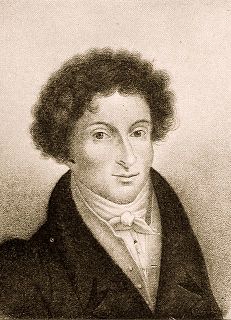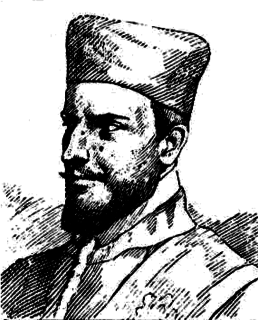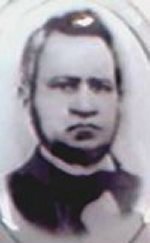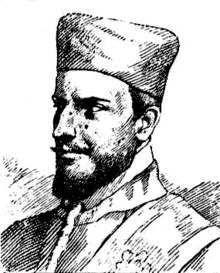
Niccolò Jommelli was a Neapolitan composer. He was born in Aversa and died in Naples. Along with other composers mainly in the Holy Roman Empire and France, he was responsible for certain operatic reforms including reducing ornateness of style and the primacy of star singers somewhat.
Pietro Alessandro Guglielmi was an Italian opera composer of the classical period

Francesco Giuseppe Baldassare Morlacchi was an Italian composer of more than twenty operas. During the many years he spent as the royal Royal Kapellmeister in Dresden, he was instrumental in popularizing the Italian style of opera.

Giuseppe Gazzaniga was a member of the Neapolitan school of opera composers. He composed fifty-one operas and is considered to be one of the last Italian opera buffa composers.

Didone is an opera by Francesco Cavalli, set to a libretto by Giovanni Francesco Busenello. The opera was first performed at Venice's Teatro San Cassiano during 1640.

Statira principessa di Persia is an opera - more specifically, a dramma per musica - in a prologue and three acts by Francesco Cavalli, set to a libretto by Giovanni Francesco Busenello. The opera was first performed in Venice at the Teatro SS. Giovanni e Paolo, on 18 January 1656.

Giovanni Francesco Busenello was an Italian lawyer, librettist and poet of the 17th century.

Hipermestra is an opera in a prologue and 3 acts by Francesco Cavalli - more specifically, it is a festa teatrale. The opera was set to a libretto by G. A. Moniglia, and was first performed at Florence on 12 June 1658. The plot is based upon the ancient tale of Hypermnestra, a story that also later served as a basis for a well-known libretto Ipermestra by Metastasio. It was staged several times up to 1680.

Ciro (Cyrus) is an opera in three acts and a prologue by the Italian composer Francesco Cavalli in collaboration with Andrea Mattioli. It was first performed at the Teatro San Giovanni e San Paolo, Venice on January 30, 1654. The libretto is by Giulio Cesare Sorrentino in a revised version by Aurelio Aureli. Sorrentino's libretto had been set the previous year by Francesco Provenzale for the royal theatre in Naples.

Artemisia is an opera in three acts and a prologue by the Italian composer Francesco Cavalli from a libretto written by Nicolò Minato. It was first performed at the Teatro San Giovanni e San Paolo, Venice on 10 January 1657 and revived in Naples in 1658, Palermo in 1659, Milan in 1663 and Genoa in 1665.
Paolo Serrao was a distinguished and influential Italian teacher of musical theory and composition at Naples.
Carlo Francesco Pollarolo was an Italian composer, chiefly of operas. Born into a musical family, he became the cathedral organist of his home town of Brescia. In the 1680s he began composing operas for performance in nearby Venice. He wrote a total of 85 of them as well as 13 oratorios. His operatic style is noted for its development of arias accompanied by the orchestra and it shows some influence from the contemporary French opera of Jean-Baptiste Lully.
Carlo Pallavicino was an Italian composer.
Giuseppe Maria Orlandini was an Italian baroque composer particularly known for his more than 40 operas and intermezzos. Highly regarded by music historians of his day like Francesco Saverio Quadrio, Jean-Benjamin de La Borde and Charles Burney, Orlandini, along with Vivaldi, is considered one of the major creators of the new style of opera that dominated the second decade of the 18th century.

Giacomo Domenico Mario Antonio Pasquale Giuseppe Tritto was an Italian composer, known primarily for his 54 operas. He was born in Altamura, and studied in Naples; among his teachers were Nicola Fago, Girolamo Abos, and Pasquale Cafaro. Amongst his pupils were the young Vincenzo Bellini around 1821, plus Ferdinando Orlandi. He died in Naples.

Giuseppe Lillo was an Italian composer. He is best known for his operas which followed in the same vein of Gioachino Rossini. He also produced works for solo piano, a small amount of sacred music, and some chamber music.
Gaetano Monti was an Italian composer. His name is first recorded in 1758, when he was eight years old, singing in a small part in a performance of Il curioso del suo proprio danno by Niccolò Piccinni. His first opera, Adriano in Siria, was performed in Modena in 1775, and he was later named organist of the Treasury Chapel at Naples Cathedral; there he remained until 1788. Moreover, in 1776 he became an impresario at the Teatro San Carlo. Most of his works were opere buffe, and were seen in theatres in Rome, Venice, and Naples. His most popular works were Le donne vendicate and Lo studente. It was believed at one time that he was the brother of the poet Vincenzo Monti, but this is uncertain.

Antonio Cagnoni was an Italian composer. Primarily known for his twenty operas, his work is characterized by his use of leitmotifs and moderately dissonant harmonies. In addition to writing music for the stage, he composed a modest amount of sacred music, most notably a Requiem in 1888. He also contributed the third movement, Quid sum miser, to the Messa per Rossini, a collaborative work created by thirteen composers to honor Gioacchino Rossini.
Luigi Mosca was Italian composer of operas and sacred music and a noted singing teacher. He composed eighteen operas, most of which were originally for theatres in Naples, but played throughout Italy in their day.

Zanaida is a three-act opera with music by Johann Christian Bach and libretto by Giovanni Gualberto Bottarelli. It debuted in London in May 1763.











